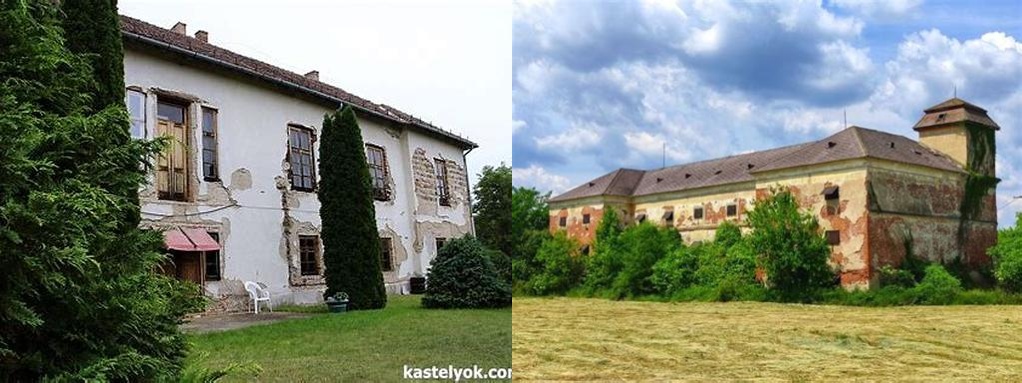
Tucked away in the remote, tranquil setting of Northern Hungary lies the sleepy village of Tésa—a place where time slows, and the countryside meanders lazily between the forested folds of the Börzsöny hills. As you stroll through its charming streets, history seems to peek around every corner, but nowhere does it feel more tangible than at the Foglár-kastély. This mansion, at once proud and unpretentious, is a living testament to the persistence of stories, architecture, and rural aristocratic life. For many, the journey to the estate begins with curious questions: Who were the Foglár family, and why did they build such an elegant home, hidden so far from the main routes of the world?
The Foglár family first put down roots in Tésa in the late 18th century, part of the shifting mosaic of nobles and minor gentry seeking to establish their legacies in rural Hungary. By the early 19th century, the vision for the mansion took shape, culminating in its construction in 1835. The building embodies a period of relative peace and prosperity, when families like the Foglárs invested in estates that would serve not only as homes but as anchors of community life. The architecture is neoclassical, restrained and symmetrical, but still leaves room for flourishes—a playful balcony, ornate shutters, delicate plasterwork beneath the eaves. Despite war, occupation, and economic upheaval, the mansion stands as proof that tradition can weather the storms of history.
Inside the walls of Foglár-kastély, a different kind of silence prevails. There are no velvet ropes here or rows of explanatory plaques; instead, the history speaks through creaking floorboards and the way afternoon sunlight skates across century-old window glass. While the interior has faced many changes—including wartime requisitions and decades of Soviet domination—it retains details that invite the imagination. A visitor might be lucky enough to view fragments of original frescoes or run a hand along hand-carved banisters, evidence of a craftsmanship rarely found in today’s world. Unlike the grand houses of Budapest or the promenades of Gödöllő, Foglár-kastély invites you not to observe, but to inhabit the echoes of its past.
Perhaps the real genius of Foglár-kastély lies in its ability to evoke lives lived. Picture the literary salons hosted under candlelight, the local gentry arriving in pressed uniforms and layered skirts. The Foglár family was not isolated; they played host to neighbors, artists, and, according to rumor, at least one notorious visitor during the 1848 Hungarian Revolution. These walls have heard whispered plans, congratulations at weddings, and the pitiful laments of loss. Each generation added something unique. After World War II, when so many noble estates across Hungary were confiscated, the mansion found new uses: as a school, offices, and at times, as an impromptu shelter for those uprooted by conflict. Today, even stripped of most furniture, it is a reservoir of memories, its every imperfection testifying to the passage of real human lives.
Don’t, however, expect only somber reflections. The grounds are surprisingly joyous. Local lore claims that generations of children learned to ride bicycles within the mansion’s gravel drive, and at almost every hour, songbirds perform from the branches of its ancient chestnut trees. Each season brings changes—lilacs in spring, ripening fruit in summer, a blaze of color in autumn. For those fascinated by flora, note the well-tended kitchen garden, which for decades sustained not just the Foglárs but an ever-rotating circle of household staff and villagers paid in herbs, beets, and baskets of apples. The surrounding countryside offers generous walking paths, each bending away from the mansion, and always, in the distance, the promise of the Börzsöny’s green mysteries.
No visit to Foglár-kastély should end without spending a little time in the village of Tésa itself. With a population of little more than a hundred, it is among the smallest, most intimate locales in Hungary, but what it lacks in size, it makes up for in spirit. The neighbors are likely to offer a nod or a quiet greeting as you pass. If you’re here in late summer, you might stumble on the village plum festival—when traditions are celebrated with homemade jam and unrushed conversation beneath the eaves of the old houses. In many ways, the continuing life of Tésa ensures that Foglár-kastély isn’t a relic, but a thread running through the unfolding story of this remarkable place.
So, whether you’re searching for history, a quiet afternoon among chestnut trees, or simply a place where the weight of time feels gentle rather than oppressive, the Foglár-kastély is a revelation. If you linger on its creaking veranda as the day fades, listening to the low murmur of village life, you might just feel closer to those who once dared to dream, build, and persevere in this forgotten corner of Hungary.





